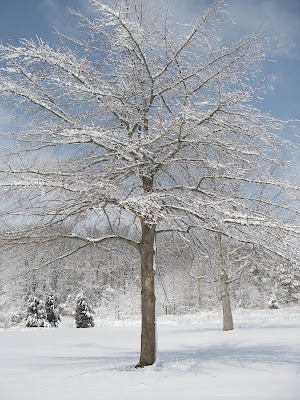
Spring has come to the Adkins Arboretum and we’re ready to outfit the visitor with the latest necessities for the great outdoors. As always, there are tee-shirts, hats and warm vests for those early spring days where the temperature may rise above 60 degrees but not for long. Our aprons are handy for working in the garden and can hold a monogrammed water bottle, a colorful pair of rubberized gloves and new Felco pruners. For the beginner in the garden, there are design books and plant guides. To keep the little visitors occupied as well, the gift shop stocks challenging puzzles, kites, puppets and journals for recording their first attempts at a garden of their own.
New to the activities offered this
year at Adkins are guided bird walks along the many trails through both meadow and forest habitat. To help with identifying the many sights and sounds, there are field manuals, Fandex identity cards, animal and bird bingo and finally, battery operated Identiflyer players. For the true enthusiast, the singing alarm clock with assorted bird songs and is a must have.
For the visiting gourmand, the “Soup and Walk Cookbook” is a compendium of that program’s offerings from over the years. Just reading a recent menu would make most folks hungry and after the requisite walk, the lunch is most appreciated. Euell Gibbons had nothing on the arboretum’s creative minds when it comes to varied menus assembled from nature’s bounty.
For the reader in the group, we have available a selection of books endorsed by the arboretum’s Book Club. If you haven’t read “Silent Spring” by Rachel Carson or “Sand County Almanac”

by Aldo Leopold, maybe the current selection “The Wild Trees” by Richard Preston will go home in your bag. Our many bookshelves are filled with hardcover and soft back writings informative, imaginative and memorable.
Finally, for visitors wishing to leave with a keepsake from their peaceful ramble through our grounds, the gift shop has so many choices to offer. How about an elegant coppery pin cast from a tulip tree leaf? Or maybe one of the many plant books to help solve that problem spot in Mom’s garden back home? The plush bird toys that sing their own songs when squeezed seem to be perfect for children of any age. If unable to decide on a gift for that special someone, make them remembered.” Arboretum memberships are available for both individuals and families and come with many perks not the least of which is a great reason to return and see us again.











